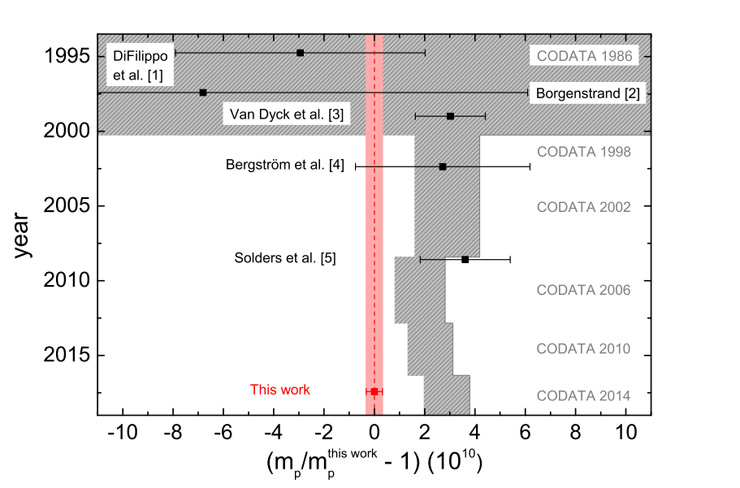Is the proton lighter than we thought?
World science, 06 July 2017
The most precise measurement ever of the mass of the proton suggests that the particle is a tiny bit lighter than the current accepted value. Although the difference is less than one part in 10 billion, it has a statistical significance of 3σ.
The measurement was made by Sven Sturm of the Max Planck Institute for Particle Physics and colleagues, who compared the cyclotron frequency of the proton to that of an ionized carbon-12 atom. The particles were held in a Penning trap using magnetic and electric fields. The fields cause a charged particle to follow a looping orbit that is defined by the cyclotron frequency – which is related to the electrical charge and mass of the particle. Comparing the frequencies of the proton and carbon-12 gives the mass of the proton in atomic mass units, which are defined by the mass of the carbon-12 atom.
Thrice more precise
Writing in a preprint on arXiv, the team gives its measurement of the proton mass as 1.007 276 466 583(15)(29) atomic mass units, where the first brackets contain the statistical uncertainty and the second brackets the systematic uncertainty. The result is three times more precise than the current accepted value published by CODATA.
An extremely precise measurement of proton mass could help solve several important mysteries in physics, including the “proton radius puzzle” of why the radius of the particle appears to be smaller than expected. Knowing the mass of the proton (and the antiproton) to high precision could also lead to an understanding of why there is much more matter than antimatter in the universe.
Source: http://physicsworld.com/
 Comparison of the new result to previous values for the
proton’s atomic mass that disagrees with the latest CODATA value, F. Heiße et al. / arXiv.org, 2017
Comparison of the new result to previous values for the
proton’s atomic mass that disagrees with the latest CODATA value, F. Heiße et al. / arXiv.org, 2017